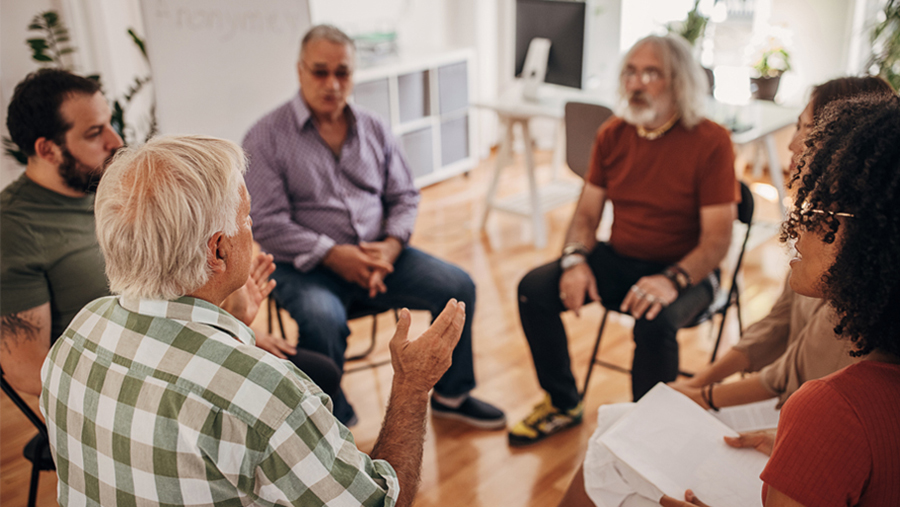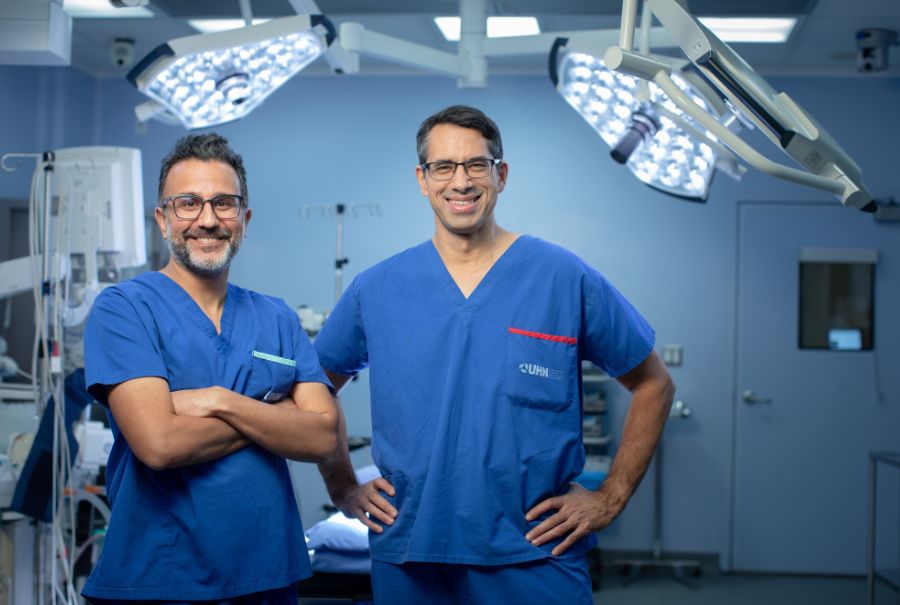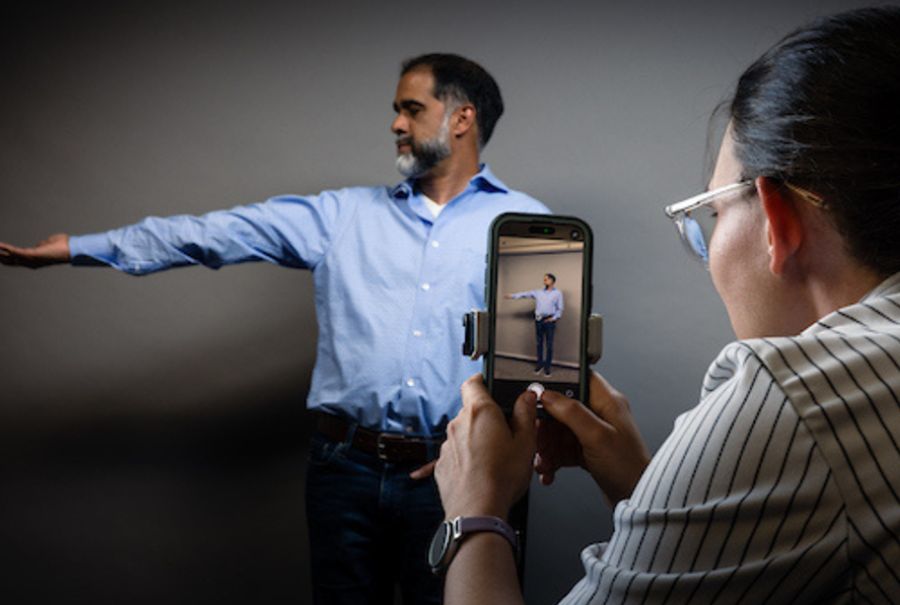At age 51, Marianne Fedunkiw suffered a series of devastating strokes, but she got her life back thanks to Dr. Aleksandra Pikula, a stroke neurologist at UHN’s Krembil Brain Institute, and the team at Toronto Rehab. (Photo: Derek Shapton)
Marianne Fedunkiw: I had my first ischemic stroke when I was 34, and I bounced back really quickly. I was only in the hospital for a few days. I thought it was a fluke because I had none of the risk factors. A few months later, I went on to finish my PhD and pursue an academic career.
Then, in 2016, my husband and I spent six weeks back in Oxford, England, where I had finished my postdoctoral fellowship years before. I was 51 and working on my second novel. I was cycling to a friend’s for dinner when I had to stop. I had a headache, with a pounding so severe it felt like a stake was being driven through my head. I texted my husband and he met me with an Aspirin, and that helped. I even got through the dinner.
We didn’t realize I was having a stroke so it was only when a friend insisted, that I went to the hospital in Oxford. After an overnight stay, I was discharged. We were due to fly to Toronto a few days later, as my research contract was up.
The day after we returned, I went to the Emergency Department because I still had a bad headache and I was spending a lot of time sleeping. I woke up in the stroke unit of Toronto Western Hospital. I later found out that this time I had had both a hemorrhagic and an ischemic stroke.
About half of hemorrhagic strokes are fatal, so it’s a miracle I survived.
Dr. Aleksandra Pikula: I met Marianne briefly on admission, then followed her for about 90 days after her strokes, which is standard practice. During her hospitalization, Marianne spent time in the Intensive Care Unit. But when I saw her, she had already completed in-patient rehab, she was able to walk and her language had recovered.
Typically, at this point most patients would be discharged from our clinic. The stroke neurologist would educate the patient on what to do to avoid a second stroke, such as addressing common risk factors (high blood pressure, diabetes) and engaging in healthy lifestyle choices. Then they’re back to their family physician for ongoing follow up.
However, what we see is that such short interactions with patients are a real problem. Stroke is a life-changing experience, and even if a patient recovers from their physical deficits, there are many emotional issues to deal with as well.
A stroke can have a major impact on a person’s well-being at any age, but for people under 65, like Marianne, a stroke can be truly devastating. Post-stroke recovery may take years. Many patients feel they need to learn how to navigate a new norm, as they try to get back to their careers, their relationships, their lives.
At the same time, many patients are responsible for taking care of young children or elderly parents. Yet, despite no true physical disability, they may have “invisible” deficits that will not allow full engagement.
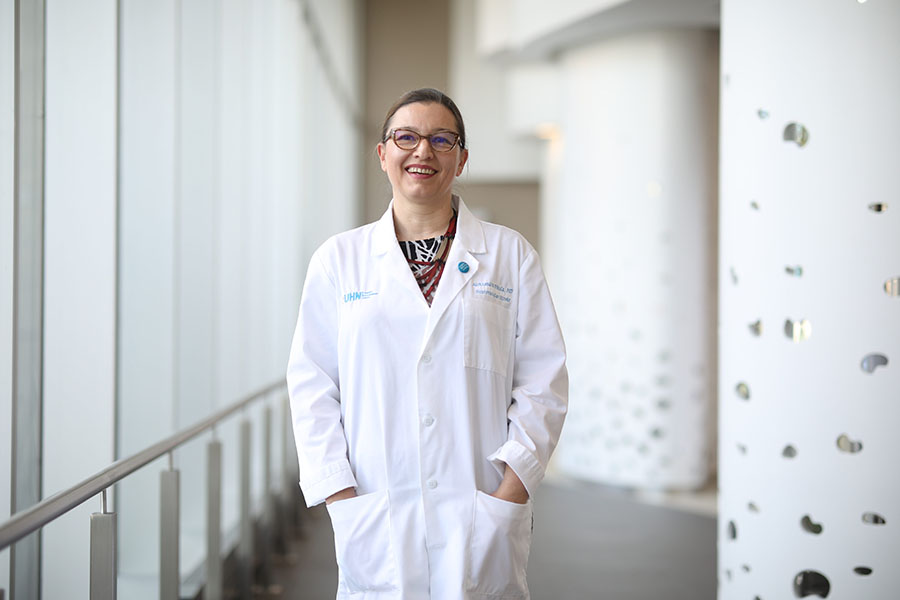
The research shows that 30 per cent to 40 per cent of younger stroke patients will experience cognitive dysfunction post-stroke, such as difficulty with multi-tasking and attention, and up to 80 per cent have psychosocial issues, like depression and anxiety, or the feeling of ongoing stigma and loss of self-identity.
Many aren’t able to go back to work right away, or ever, so there’s a huge economic cost, but also a personal and societal cost. It’s a lot to expect family doctors to manage these complex issues alone, so we have to shift our focus to thinking of stroke as a chronic disease rather than an acute one.
Providing support to younger patients
Dr. Pikula: Stroke in younger adults and patient-reported outcomes are not well understood or commonly studied. My team and I are conducting a very important study that examines the long-term psychosocial and occupational needs of younger stroke patients, with an emphasis on our patients’ lived experience.
We’ve gathered data on around 100 patients, using tools that measure a variety of aspects of quality of life, including their mental health, social supports and treatment preferences. Only 25 of these patients went back to work full time. We’ve also conducted in-depth interviews with about a quarter of the patients in the study to better inform how we can care for patients after stroke in a more holistic manner and help them reintegrate back into their personal and professional activities.
More importantly, we are in the process of developing an intervention that will be further tested to examine how to help these patients adopt a proactive self-management approach to lifestyle changes, thus limiting the chances of stroke re-currency (which is high in this population group, given their expected longer lifespan post-stroke).
Marianne: When I first spoke with Dr. Pikula, I was breaking down a lot. She connected me to a psychiatrist, Dr. Kathleen Sheehan, who works with relatively young people with chronic illness.
Dr. Sheehan helped me work through the grief related to the death of my father and the loss of the academic career I was hoping to have.
In my life at Oxford, I was always meeting new people and striking up interesting conversations. After my stroke, I knew I couldn’t pursue my dream job there. I can’t multi-task anymore, and handwriting is something that hasn’t come back, though I’m still able to type.
For me, my career is my identity. If I don’t have my career, then who am I? The mental health implications of a post-stroke world can be devastating.
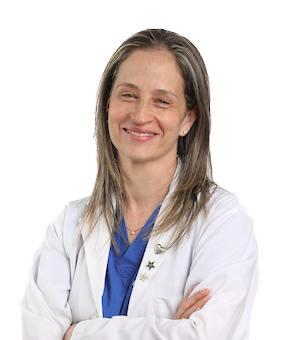
Embracing a new life
Dr. Pikula: At our stroke program for younger adults, called SiYA, we follow patients for years after a stroke. I see them every six months, and our clinic readily connects them to rehabilitation, psychiatry, nutrition and a range of other services that are closely integrated.
At UHN, about 15 per cent of people recovering from stroke are under 50, while 30 per cent are below the age of 65. This population group is often in a peak professional position. Many have families, young children or elderly parents to take care of, and their identity is interconnected with professional achievements and life satisfaction, so they need a strong support system.
I try to guide them into adapting their career expectations and rediscovering themselves. For example, one of my patients was a business executive, and now she is working part time as a business consultant. She still has that purpose through her work, but she’s contributing in a different way.
Many patients started a new career or even began volunteering to rediscover their purpose. It’s the same with Marianne. She’s finding ways to bring her research and passion for writing back into her life, yet on her own terms.
Marianne: Dr. Pikula has helped me realize I have worth outside my career. It’s very subtle, how she does it. When she talks to me, I don’t feel like she pities me. It’s like she’s catching up with a former colleague who has just taken a different path. She’s helped me accept that I needed to give myself time.
In stroke recovery, often the brain is ready to go off and resume life as normal. But then you can be hit by fatigue – you might even fall asleep in the middle of a conversation. So you really need to relearn how to “be,” and in my case, I needed to consider “who” I could become.
Dr. Pikula: We’re still analyzing the results of our study of younger stroke survivors, but one theme we’ve seen is that they need long-term and comprehensive supports in many aspects of their recovery.
Many express a need to have a health navigator who is specialized in stroke to help them access services in the community, like nutritional programs, mental health services and classes like yoga, where people can engage socially with less pressure, that are geared toward younger adults with similar experiences.
Medications help, but we have to work on complementary tools as well, assisting patients with improving their lifestyle. Stress, sleep and diet are really important for the brain to recover, as well as to prevent another stroke.
Based on this study, we’re in the process of designing a program to better meet the needs of young stroke patients, and we recommend governments fund such programs. It costs money, but when you consider the impact on someone’s long-term mental and physical health, and for our society as a whole, it’s worth it.

Jessica Galbraith (occupational therapist at Toronto Rehab): When I met Marianne, she suffered from brain fog, what she described as “getting stuck.” I helped her find ways to conserve her energy and stay focused.
We used an approach called goal management training, where we would break down her writing goals into smaller chunks and plan how she could work on the steps. We worked on schedules where she would write for short periods of time, not hours like she did before. And we would build on that, day by day.
We want to support people in achieving their goals of returning to work, school or volunteering; we just want to make sure they don’t go back too early or quickly, when they might not be ready.
There needs to be a balance between activity and rest after someone has a stroke because there is a lot of consolidation of learning and healing that happens at rest.
But even though they’re not working, it’s important for people to engage in meaningful occupations. Hobbies or social activities give them that feeling that they’re being productive, and it’s also therapeutic because it promotes further stroke recovery.
So I asked Marianne if there was a hobby she wanted to try, and she decided to try sculpting. Afterward, she gave me the amazing sculpture she made. It’s sitting in our office at work.
It means a lot to know I’ve had this positive impact on Marianne’s life.
Marianne: It’s tempting when you have a stroke, to say, “I can’t do this.” With the sculpting class, I didn’t know if my fingers would work properly, but I was sitting across from the live model and we had this smooth clay. I could do it. It was so therapeutic and freeing, because I wasn’t evaluating myself based on what I was pursuing as a career. I’m not a professional sculptor.
I’m also working on a play, which is about four people recovering from a stroke. I’m hoping to turn it into a musical. One of the characters is training to be a surgeon, but then she has a stroke and her hands no longer work the same. Her fine motor skills are affected. Over time, she realizes she may not be able to become a surgeon, but she could be a neurologist. I’m calling her Aleksandra.
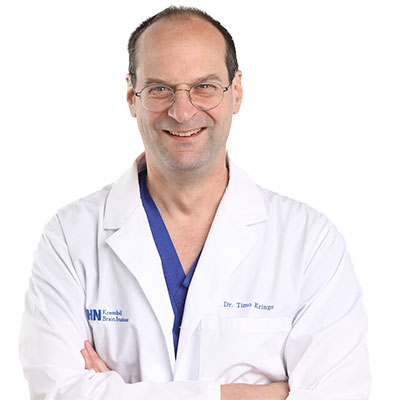
Better brain-saving operations
UHN’s Krembil Brain Institute (KBI) is pushing the envelope to help more stroke patients.
Until recently, there wasn’t much clinicians could do to treat major strokes. Blood thinners could help break up small clots, but it was hard to treat big ones.
Then, in 2015, results from a breakthrough endovascular therapy (EVT) trial were released that forever changed how strokes get treated. With this therapy, a catheter is inserted into the groin or wrist and carefully moved through the artery all the way to the blood clot in the brain. Then, a wire with a stent on the end is pushed through the tube. When the wire reaches the clot, it “grabs” it and pulls it out.
At first, major stroke organizations only recommended EVT for strokes caught within six hours and in large veins. In the years since, however, clinicians at the Krembil Brain Institute have increasingly pushed those limits.
“We’re moving into new frontiers,” says Dr. Ronit Agid, a neuroradiologist and clinician investigator at the KBI. “At first, we would only go if it’s a large vessel; now we go into vessels that are one millimetre in diameter.”
So long as imaging shows the area near the clot still has some blood circulation, clinicians can operate up to 24 hours after a stroke.
The new treatment possibilities mean more brain-saving operations than ever before, especially at the KBI, which is a world-class regional stroke centre with a leading acute stroke team. Nurses and clinicians from radiology, anesthesiology and neurosurgery have to be ready to work together, fast.
“We pride ourselves on a team-based approach to brain healthcare,” says Dr. Patrick Nicholson, a neuroradiologist at the KBI. “We train fellows from all over the world, so they go back home and hopefully help improve their systems of care locally.”
With treatments now available for more stroke patients, even for those who may have to fly to an advanced stroke centre, it’s that much more important to educate the public about strokes, explains Dr. Timo Krings, a neuroradiologist and scientist at the KBI, and the David Braley and Nancy Gordon Chair in Interventional Neuroradiology.
“While the majority of our population knows what the signs of a heart attack are, very few know the symptoms of a “brain attack,” or stroke, and may thus not receive timely treatment,” notes Dr. Krings.
“So this is one area where we can focus future research and education.”
Thanks to today’s neuro-interventional radiology procedures, someone can go back to their life after a major stroke, whereas just 10 years ago, they may have needed 24/7 care, explains Dr. Agid.
“From being able to regain their vision or speech, or even walk again, we can now help many more stroke patients go back to a normal life,” she says. “There is no better feeling.”
Read more in the Krembil Brain Institute magazine.
